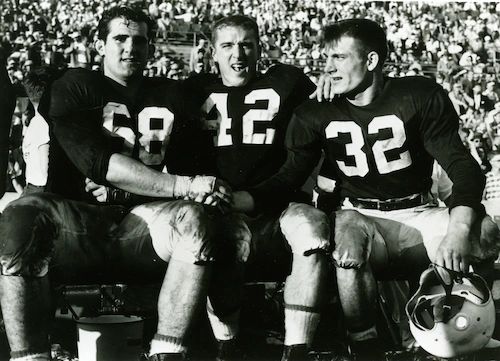
On January 1, 1953, the Alabama Crimson Tide delivered a record-setting performance in the 1953 Orange Bowl, routing the Syracuse Orangemen 61–6 in one of the most dominant postseason displays in NCAA history .
🏆 A Historic Blowout
Alabama’s staggering 55-point margin remained the all-time high for any bowl game until Tulsa surpassed it in 2008—and it still stands as Alabama’s biggest bowl win . The Crimson Tide scored 54 unanswered points after a brief Syracuse response early in the first quarter .
✨ Standout Star Power
Bobby Luna opened the scoring with a 27‑yard touchdown pass to Clell Hobson.
Thomas Tharp electrified with a 50‑yard reception, while Bobby Luna also broke free for a 38‑yard TD run .
Future Packers legend Bart Starr contributed with a 21‑yard TD pass, highlighting the depth of talent on display .
Hootie Ingram, dubbed the “Tide’s Honorable Thief,” cemented his reputation by snagging an interception during the rout .
📜 Beyond the Scoreboard: Social Context
While the score was historic, the game took place against a backdrop of racial tension. With segregation policies still prevalent in the South, the matchup underscored broader cultural issues as Alabama maintained an all-white roster .
📊 Legacy and Records
Their 55-point victory was the largest in Orange Bowl history for over 50 years and still marks Alabama’s most resounding postseason win .
This win capped a 10–2 season, and granted Alabama its first bowl appearance since 1947—cementing coach Harold Drew’s resurgence of the Tide .
—
Why the ’53 Orange Bowl Still Resonates
Why It Matters Description
Record-setting performance Unmatched margin of victory stood for over five decades
Showcase of future stars Featured legendary names like Bart Starr and Hootie Ingram
Cultural reflection A reminder of segregation-era college football dynamics
Legacy-builder Cemented Alabama’s resurgence and bowl relevancy under coach Drew
—
Bottom Line:
The 1953 Orange Bowl wasn’t just a lopsided win—it was a statement. Alabama’s explosive offense, lockdown defense, and future Hall of Famers combined for a near-perfect showcase that reverberates through college football history. It’s not just a victory—it’s an iconic moment that defines an era of Crimson Tide dominance.